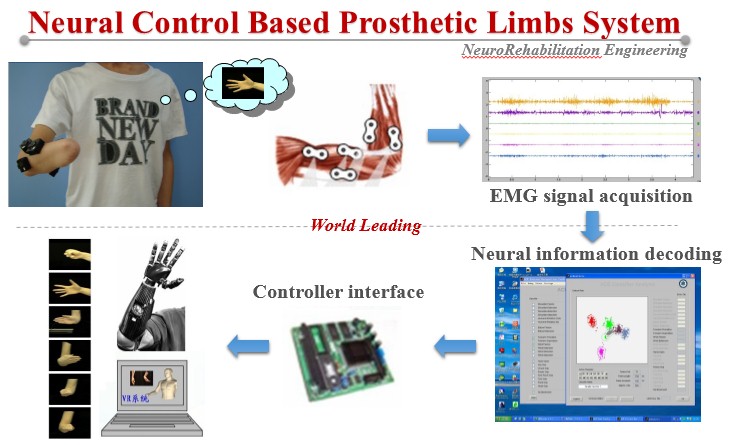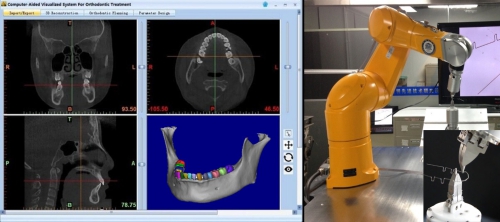Neural Control Based Prosthetic Limbs System
A research group led by Prof. Guanglin Li developed a neural control based prosthetic limbs system for upper-limb amputees to help them regain limb locomotion and functional abilities. EMG signal of residual muscle is gathered and acquired at first, then algorithm like pattern recognition is used to decode acquired EMG signal and analysis motion intention of amputee. Then prosthetic limbs can be controlled to perform relative motion based on decoded motion intention according to decoded results. The accuracy of classification among 6 motions, which are hand open/close, hand flection/extension, hand adduction/abduction is around 95%. At the same time, new kind of prostheses are designed and fabricated with characteristics of low-cost, light and anthropomorphic, hopefully to fulfill the increasing need of Chinese amputees. The related works are published in IEEE INTELLIGENT SYSTEMS, PLoS One, Sensors, ULTRASONICS, IEEE TRANSACTIONS ON FUZZY SYSTEMS and some international conferences.

Robotic System for Orthodontic Treatment Assistance and Appliance Preparation
A research group led by Prof. Zeyang Xia developed a robotic system for orthodontic treatment assistance and appliance preparation. The system applies patient’s CBCT images to reconstruct the 3D models of “Tooth-PDL-Bone”Complex for diagnosis and treatment planning. Tooth movement is simulated and predicted using dental biomechanical analysis, and customized appliance is designed based on the simulation results. The designed appliance is then automatically prepared by a robot. It is believed the developed system will improve the outcomes of orthodontics, decrease the treatment duration and costs. The related works were published in IEEE Signal Processing Letter, IEEE IROS 2015 and IEEE ICRA 2016.

The orthodontic treatment assistance system and robotic system for appliance preparation.
Highly Stretchable Gold Nanobelts with Sinusoidal Structures for Recording Electrocorticograms
A research group led by professor Zhe Yu and their collaborators, from Nanyang Technological University at Singapore, has recently developed a unique gold nanobelt with sinusoidal structures to achieve a high stretchable and conductive electrode. Such structures are shown to enable the gold nanobelts to behave with excellent stability even after 10,000 cyclic stretching/relaxing processes with a uniaxial strain of over 130%. Moreover, the as‐prepared gold nanobelts are demonstrated to be able to successfully record electrocorticogram signals from both healthy rats and those suffering from epilepsy. This work provides a universal approach for fabricating stretchable devices for future applications in stretchable electronics and biointegrated electronics. The work is published in Advanced Materials in 2015 (DOI: 10.1002/adma.201405807), whichis also highlighted as the inside cover.


